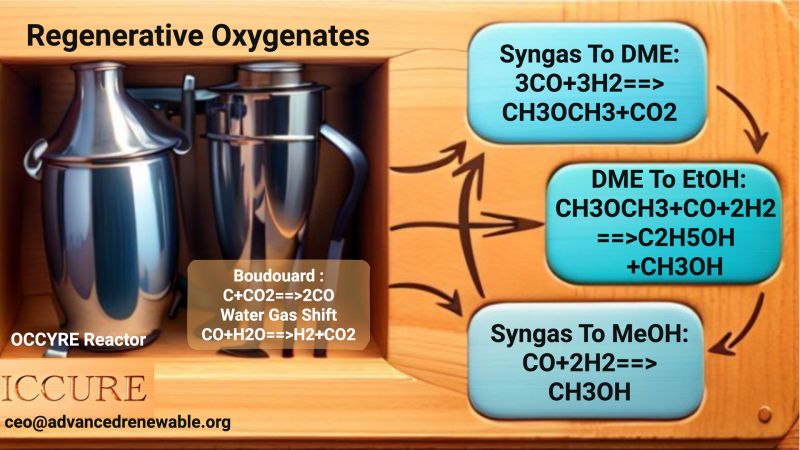Introducing Biofuels 5.0: Regenerative Oxygenates (REOX)
Advanced Renewable
Wed , 28 Feb 2024 19:17 WIB

In the development of biofuels, the world knows Biofuels 1.0, namely those whose raw materials still compete with food, 2.0 which use waste such as lignocellulose, 3.0 which use non-food plants that grow very fast such as microalgae, 4.0 which use biomass from genetically modified plants specifically for biofuels feedstock. So what is Biofuels 5.0?
The Biofuels 5.0 that we are introducing here uses raw materials from a combination of biomass waste and CO2 emissions. The advantages compared to the previous four generations of biofuels are in the CO2 cycle. CO2 emissions from biomass even if it is released into atmosphere is still carbon-neutral, but if we don't release this carbon-neutral substance into the earth's atmosphere, instead capture it and reuse it for fuel production, we will get three benefits at once.
First, we will have an endless source of carbon, because every time it is used as an energy producer, the CO2 emissions are captured and reused. Second, economic growth and world energy needs do not necessarily have to be followed by growth in emissions. And third, all countries, all regions and even communities in remote areas should be able to produce their own energy from local raw materials. This is the democratization of energy - where all parties should have equal access to energy.
So how can we produce this Biofuels 5.0? The one from the Regenerative Hydrocarbon type, I have previously uploaded the formulation here: https://lnkd.in/gXYMQWqE , while the one in the illustration below is from the Regenerative Oxygenates (REOX) type, what exactly is this REOX?
It is a fuel containing oxygen, whose production involves the utilization of recirculated CO2. I take the three most common examples, namely Ethanol, Methanol and DME - all three of which can be produced from combining biomass waste and CO2.
The different from the previous 4 generations occurs at the beginning of the production process. In REOX, CO2 and carbon from biomass are reacted to become the main component of syngas, CO gas. The reactor we made for this uses the Boudouard Reaction formulation, while to produce H2 from CO we use Water Gas Shift (WGS). We call the reactor itself OCCYRE (Onboard Carbon Cycles for Regenerative Energy).
The OCCYRE output in the form of CO and H2 gas can be used to produce all kinds of oxygenates. The simplest is Methanol, it can be directly produced from 1 CO molecule and 2 H2 molecules, drying 2 Methanol molecules will become DME, DME can also be produced directly from 3 molecules of CO and H2 each.
Ethanol and Methanol can be produced simultaneously from 1 DME molecule, 1 CO molecule and 2 H2 molecules, and so on. The point is that Affordable Clean Energy for people allover the world, which is the world want to achieve it before 2030 (SDGs 7), should be achieved sooner rather than later!
Pos Lainnya
Ultimate Energy Efficiency and Decarbonization
Feb 28, 2024
Agar Ayam Tidak Mati Di Lumbung Padi
Feb 28, 2024
Carbon-Free Energy With Green Ammonia
Feb 28, 2024
Big Problem, Big Opportunity
Feb 28, 2024
Solution for FEW Trilemma
Feb 28, 2024
Kategori
Renewable Energy




.jpeg)

Silakan mendaftar terlebih dahulu!
Untuk memposting komentar baru. Anda harus login terlebih dahulu. Masuk
Komentar
Tidak ada komentar